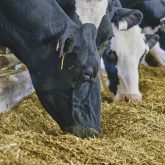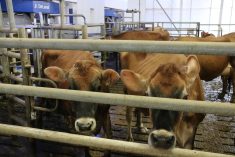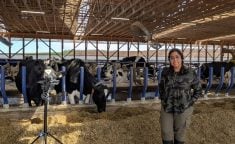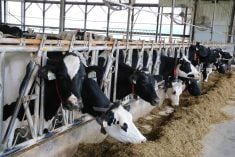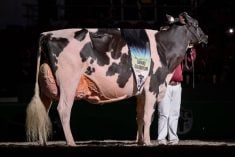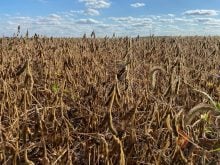The Lifetime Performance Index (LPI) for dairy farmers received some last-minute tweaks before a revamped index is launched in April 2025.
The changes were made by the Genetic Evaluation Board at its December meeting, especially after Prince Edward Island dairy farmer Wayne Dickieson pointed out that production traits were supposed to be weighted at 40 per cent in the current index, but were actually resulting in 49 per cent influence.
Why it matters: Farmers use LPI as a screening tool to select which bulls they will use on their dairy farms, and which females they will keep.
Read Also

Maizex brings Elite forage seeds under its brand umbrella
The seed catalogue for Maizex Seeds takes on a different look for its 2026 edition thanks to the introduction of a new marketing initiative dubbed “Ration 365.”
The Genetic Evaluation Board’s members are dairy farmers, genetics companies and breed organizations and they make final recommendations on how genetic indices are set in Canada.
The new LPI aims to accurately value production at 40 per cent, says Brian Van Doormaal, Lactanet’s chief services officer. The new index is based on six separate other indices, up from previous LPI models that were split between production, durability and health and fertility.
An analysis of the current LPI showed that indeed, as Dickieson suspected, for Holsteins, production received 49 per cent of the weight, durability 34 per cent and health and fertility 17 per cent.
The new LPI will balance six indices:
- Production
- Longevity and type
- Health and welfare
- Reproduction
- Milkability
- Environmental impact
Van Doormaal says that the fact that the current impact was over-rewarding production meant that more bulls had changes in their rankings for LPI.
Lactanet re-ranked top bulls and females from the December proof round under the new LPI formula.
It showed that the top 50 proven bulls had an average change of an increase of 12.6 LPI points. The largest increase was 172 points and the largest decrease was 189 points. For genomic bulls, the top 50 were on average 2.6 LPI points lower. That largest change was an increase of 152 point and the largest decrease was 124 points.
Many of the bulls stayed the same, but there were a few major changes, mostly based around the previous inadvertent extra emphasis on production. On the proven bull list, Co-op Altabooyah dropped from number seven on the list to 54.
Siemers Renegade Rozline moved from number eight on the list to number two. Stantons Remover PP kept his top ranking.
Lactanet has created an Excel tool which will allow genetics companies and dairy farmers to figure out where their livestock will re-rank in the new LPI system. It is available on the new Lactanetgen.ca website, which is replacing the legacy site cdn.ca in April.
The dairy strength debate
The dairy industry has been gradually moving for years to reduce emphasis on dairy strength, which has been correlated with a decline in longevity in herds. Tall and angular cows tend to stay shorter times in herds.
There was a proposal to remove dairy strength from the longevity and type portion of LPI, but the GEB decided to move it to five per cent, from 10 per cent, not to zero.




